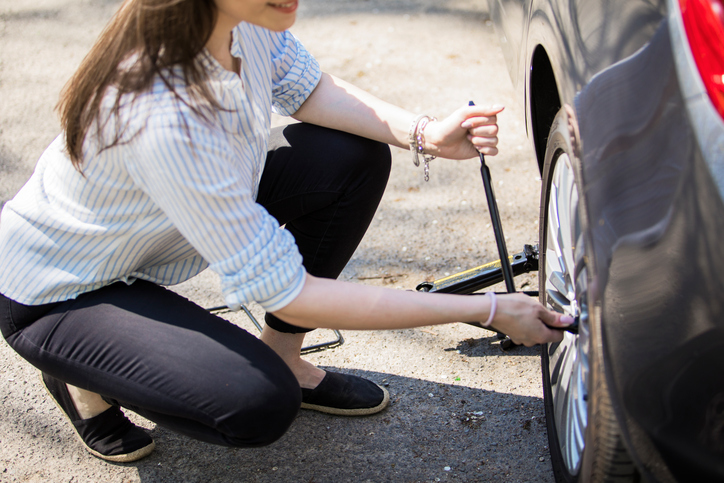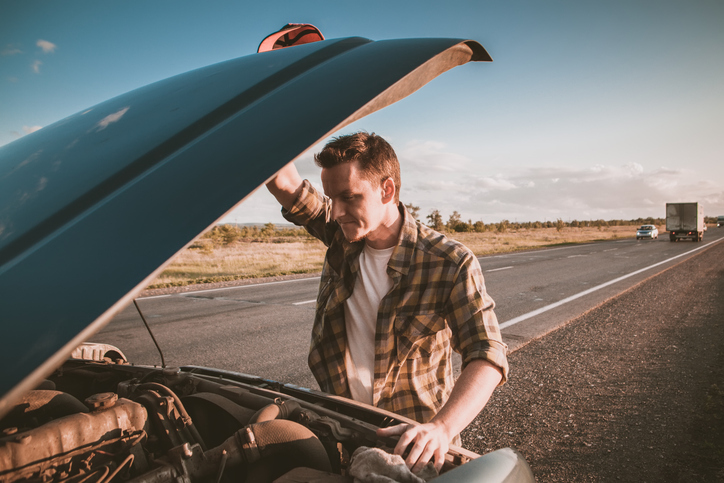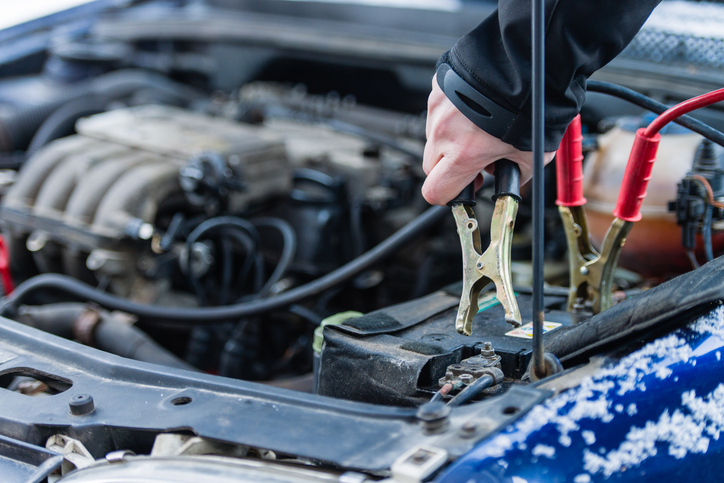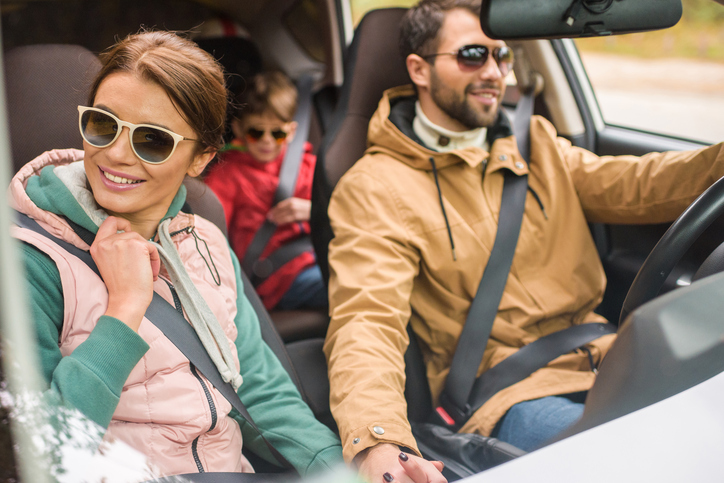A road trip can be a source of laughter and memorable moments. However, if things go sideway it can be one of the worst experiences ever in your life.
Whether it’s just a three-hour drive or a super long drive across the country, a road trip can be the beginning of a wonderful experience. However, you should be fully aware of all the necessary road trip safety procedures so that you can enjoy your journey in relative comfort.
When planning any vacation, especially when it involves being on the road for long hours, preparation is key. You can’t just wake up in the morning and jump into your car and head out to parts unknown.
Well, you can, but it’s ill-advised.
While that might seem spontaneous and fun, you should be ready to face an assortment of unforeseeable occurrences that might put a damper on the entire trip. For a fun, safe and enjoyable road trip, plan your travel effectively.
Let the driving factors be based on the following criteria:
- Your destination
- Size of the group
- Type of trip you want to take
- Type of car you intend to drive
Before hitting the road, double check that the vehicle you are going to use is properly maintained and has recently been serviced. Most importantly, check the brakes, tires, wipers, oil, battery, belts, and the transmission fluid.
In case you’ve had a car break-down in the past, it’s ideal to seek professional vehicle check-up services before hitting the road again using the same car. However, you can also seek the services of reliable roadside assistance programs so that you can be conveniently covered during your trip.
Tips Preparing for a Long Drive
While preparing for the road trip might sound like the ‘less-fun’ part of this entire undertaking, it’s definitely the most important one. You need to try and anticipate any given situation and put measures in place to counter it – should the worst happen.
Here are some tips that can help you better prepare for your road trips:
-
- Plan everything:
Try to get everything organized well before the trip due date. On the night before, make sure to get enough sleep; we’re talking at least seven hours of sleep before setting off on your journey. What this means is that you should not drive when tired or drowsy. According to the CDC that’s how over 72, 000 crashes, 44,000 injuries and 800 deaths were caused in 2013!
-
- Study the map to your location:
It’s a good idea to find out if there is any road construction that has begun on the route you are bound to follow, or any other delays or detours.
-
- Do remember to plan for the weather:
When the sun is out, and the long summer days are upon us, driving can be a joy. However, when it’s snowing, or there is a blizzard, the conditions become dramatically more dangerous. Be sure to check the weather forecast to make sure that you’re not putting yourself and your passengers in unnecessary danger by driving through dangerous weather conditions.
-
- Visit your mechanic:
That recent visit to the mechanic two-weeks ago does not guarantee you a smooth ride. Ensure your trusted mechanic inspects your car and gives you the greenlight ensuring that the car is roadworthy. Even though your mechanic may be excellent at what he or she does, other unforeseeable circumstances may pop up; things that your mechanic may not be able to predict.
-
- Budget accordingly:
While you may have enough money for gas, snacks, accommodations, and soft drinks, you will need to have extra cash for things that may come up such as tire punctures or flats and unexpected repairs.
-
- Travel with people you know:
If you’re traveling with a group of friends, make sure you know each member of the group well enough to trust them with your safety and vehicle. This spares you the drama that comes with such unfortunate occurrences as being caught off-guard by police because of possession of illegal weapons or other illicit items. If you will be routinely taking shifts in driving, make sure that everyone has a valid driver’s license.
-
- Have a fully stocked emergency kit:
A basic first aid kit is a necessity for any car. However, for long road trips, be sure to check if the kit is fully stocked before setting off.
-
- Be mindful of your tires:
Always carry a can of fix-a-flat and a tire gauge to continually check the tire pressure during the drive. The fix-a-flat will come in handy should you get a flat somewhere in the middle of nowhere with no cell reception.
Other factors to consider include things like making sure you have a basic set of tools that ensure your ‘in-car’ preparedness. Things like jumper cables, wheel spanners, a jack, a flashlight, drinking water, and some general knowledge about how your car works.
If the road trip occurs during winter and the weather conditions are horrid; your kit should be compliant with these adverse conditions. Warm clothing, snacks, blankets, flares, matches, and so on would be the perfect selection to have in case you get stranded in the chilly weather.
How to Fix a Flat Tire
When your tire gets a flat or a puncture, knowing how to fix it or change the tire will save you a whole lot of grief. Here are some tips on how to fix a flat:
-
- Find the leak/puncture:
This is the first step. Check the tire closely to see if you can find any holes or cuts. If they’re not visible, inflate the tire to the appropriate pressure level and note if a hissing sound is produced.a bit of water with soap and lightly pour it on the tire to see there are any bubbles in any given area
You can also mix
-
- Loosen the lug nuts and jack the car up:
Loosen the lug nuts before jacking the car up. Do this to remove the wheels by keeping the car on a firm surface using jack stands to stabilize the car.
-
- Remove the lug nuts to clean the hole:
For easier work, you must remove the lug nuts completely from the wheel. After doing that you have to clean the hole in your tire using a rasp tool.
-
- Insert the plug:
Insert the plug into the hole by lubricating it with an adhesive glue or rubber cement to ensure a better seal. After the insertion, allow some time to let the adhesive set and dry.
-
- Inflate the tire:
Finally, fill the tire with the recommended air pressure and re-install the wheel. Proceed to remove the floor jack and tighten the lugs, and you’re ready to get back on the road.
 If you think filling the air in your tires is a pain, fixing a flat is even worse.
If you think filling the air in your tires is a pain, fixing a flat is even worse.
What to Do if You Run Out of Gas
Having the knowledge of what steps to take when you run out of gas can save you a whole lot of stress. If you run out of gas in the middle of nowhere, keep these tips in mind!
-
- Get to safety:
Ensure you’re safe if you ran out of gas. Pull the car over to the side of the road with your hazard lights on. Improve your safety further by using reflector lights if present by placing them ten to fifteen feet behind the vehicle facing traffic as well as opening the hood.
-
- Know your whereabouts:
Use a GPS tracking system to know where you are and the nearest gas station.
-
- Call for backup:
Ensure that you remain reachable by phone. Switch off any active connections that can drain your power while seeking help. If there is no help coming your way, using your GPS, try to see if there’s a nearby gas station within walking distance. If you leave the vehicle, be sure to lock it.
-
- Be cautious when approached by good Samaritans:
Don’t be easy going when offered help. Make the right decision when a stranger offers to help you.
What to Do if Your Car Breaks Down
If your vehicle breaks down during the trip, follow these guidelines:
-
- Get off the road:
When your car breaks down, pull over to the side of the road as quickly as possible and then turn on your hazard lights to notify other drivers
-
- Know your vehicle’s’ location:
Know the exact location the vehicle is in for easy assistance when you call
-
- Assess the cause of the breakdown:
Check to see what could be amiss in your vehicle such as strange noises or the presence of smoke or a distinct smell
-
- Alert other road users:
If the weather is bad or it’s at night, then announce your presence with emergency flashers and raise the hood of the vehicle
-
- Call 911 or your roadside assistance service for help:
Call 911 to communicate your situation and they will advise you on what to do. You could also request for roadside help and tell your operator the problem
-
- Know your rights and responsibilities:
Be able to understand the type of services the roadside assistance or the insurance will cover
 Car breakdowns are stressful whether they take place in cold-weather or hot.
Car breakdowns are stressful whether they take place in cold-weather or hot.
How to Handle a Car Accident
If you happen to be involved in a car accident, act promptly to be on the safe side by:
-
- Pulling over and calling 911:
After experiencing an accident and after stopping the car, it’s advisable to pull it out of the line of traffic and turn on the hazard lights. Even if you escape unharmed, you should still call 911 to come out and file a report. Note that exchanging insurance information and moving on is easier but could lead to further complications down the road if you do not have an official police report.
-
- Exchange your car insurance information:
In case of damage from the accident, your insurance company and the other driver’s will need the information to proceed to determine who will pay for the damages. But, in case you left the insurance information elsewhere, you will be given 24 hours to present the information for negotiations.
-
- Get a police report:
Getting a police report will keep you well covered even with your insurance company. It will also ensure that there’s a record as to what happened exactly, so there are no false bits of information later. The actual situation that led to the accident will be analyzed, and the insurance will decide to pay the damage according to the findings and the police report.
-
- Take photographic evidence:
If you’re in possession of a smartphone at the time of the accident, take photos to act as evidence if you were not on the fault. Make sure they’re timestamped with the correct date.
-
- Be open to discussion and an amicable solution:
No matter which party is to blame, maintaining a level head and being open to discussion and finding an amicable solution will dissolve the situation so much faster.
While accidents can be frustrating, approaching the situation with a hot head will only make it worse. Remind yourself that it could happen to anyone and try to be reasonable and understanding throughout the ordeal.
Avoiding Car Trouble on Long Trips
Don’t allow yourself to become stranded on the side of the road. Consider the following factors to help avoid car trouble while on a long trip:
- Put together an emergency kit
- Make sure you have an inflated and functional spare tire
- Check to make sure everything is in working order on your vehicle
- Visit your mechanic to test your brakes and other functionalities and safety features
Additionally, there are some things that you simply must have in your car before setting off.
Items that are a must carry during the trip:
- Jumper cables
- Flares
- Quarts of Oil
- Duct tape
- Flashlight
- Toolkit
 Worst case scenario, if you need these… you’ll be glad you packed them.
Worst case scenario, if you need these… you’ll be glad you packed them.
Additionally, check the horn, windshield wipers, and the headlights of the vehicle before you take it out on the road. Note that the toolbox should be packed full of all the required items.
Finally, have a car diagnostic tool. Car diagnostic tools also known as OBD 2 scanners, play a significant role to ensure your engine functions well.
If you carefully abide by the long distance driving tips, planning for and successfully taking long trips will be fun and easy. Owing to the different ideas people have on the measures of planning a long-distance trip, it’s ideal only to pick tips that are relevant to you and let those be your blueprint for building a safe and memorable road trip.

